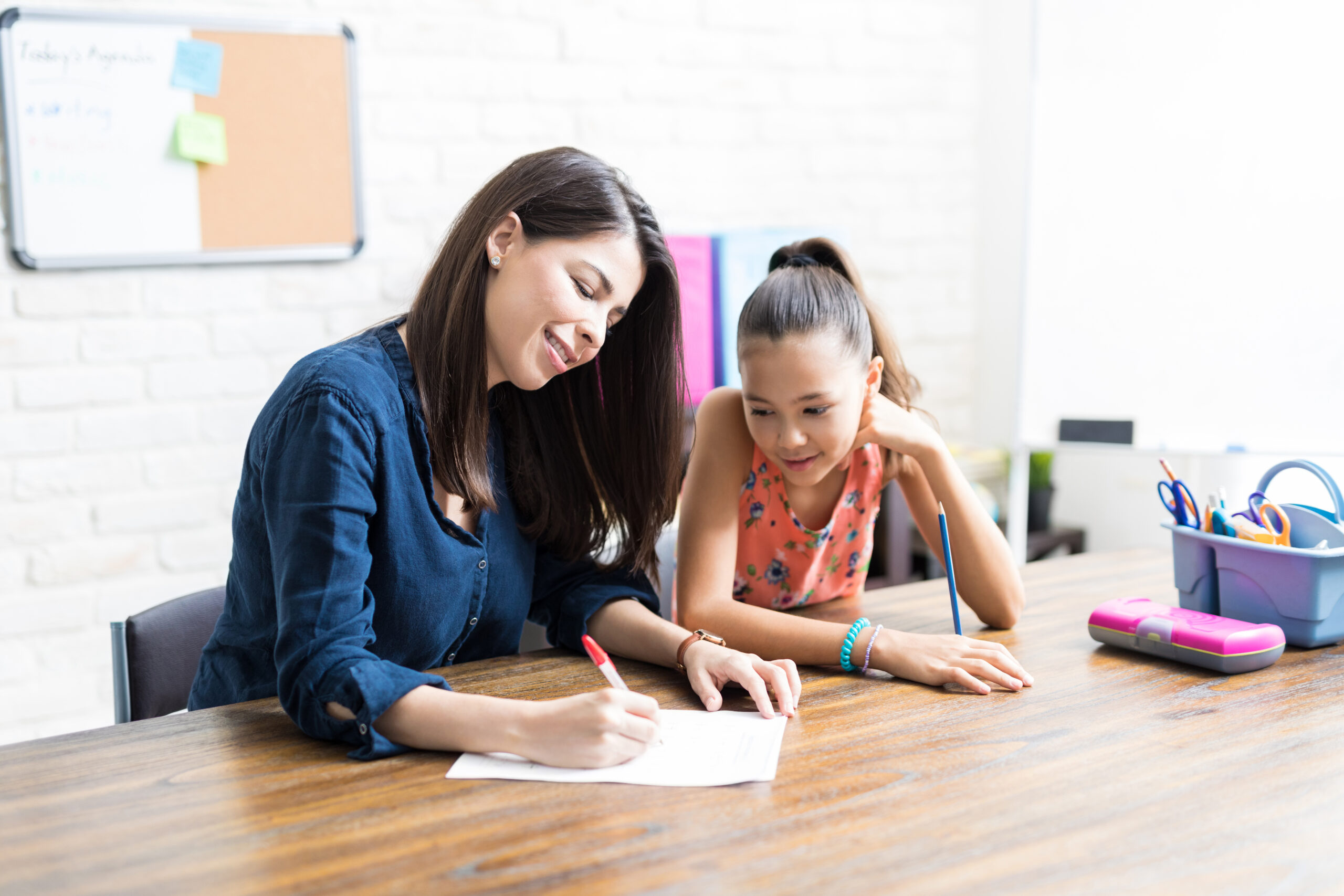Write a Letter to Your Child’s Teacher: Share Insights for Success
 August 17, 2023 | Ruth Freeman
August 17, 2023 | Ruth Freeman
You have a wealth of knowledge about your child that can greatly assist their teacher in creating a supportive and enriching learning environment. Writing a letter to your child’s teacher can be a powerful tool for fostering open communication and ensuring your child’s needs and strengths are understood.
Here’s some ideas about what you may want to include in your letter:
- Introduce your child and their unique qualities. Mention their name, age, and any nicknames they prefer. This initial introduction sets the tone for the letter and establishes a connection between you and the teacher.
- Describe your child’s strengths and interests. Whether your child excels at sports, is kind to their younger sibling or loves cooking, these insights help the teacher recognize areas where your child can be engaged and sometimes shine.
- Share information about your child’s learning style and preferences. Do they thrive in hands-on activities or do they prefer structured tasks? This information helps the teacher consider their teaching methods in relation to your child’s learning needs.
- Discuss your child’s personality traits, both inside and outside the classroom. Are they shy or outgoing? Are they empathetic or analytical? This will help the teacher understand how to best communicate and connect with your child.
- Be candid about any challenges your child may have faced, academically or socially. Whether it’s struggling with a specific subject, shyness, or difficulty in group settings, addressing these challenges allows the teacher to offer appropriate support and encouragement.
- Share strategies that have worked well with your child in the past, at home or at school. If they respond positively to visual aids, need frequent breaks, or benefit from one-on-one discussions, these insights help the teacher consider their approach to your child’s needs.
- Mention your child’s hobbies and extracurricular activities. This enriches the teacher’s understanding of your child and helps in creating connections between classroom learning and their passions.
- Provide a glimpse into your family relationships, including what is typically your child’s role in the family and any recent changes or events that might affect your child’s emotional well-being. Teachers often appreciate knowing about these aspects as they can influence a child’s behavior and learning.
- Mention the best way to reach you and any requests you have about connecting with the teacher. Establishing clear communication channels ensures you’re kept in the loop about achievements and challenges.
Writing a letter to your child’s teacher is a good way to start a collaborative relationship that supports your child’s growth. By sharing these valuable insights, you’re contributing to a partnership that can enhance your child’s learning experience and overall development. Parent involvement in school has a powerful impact on your child’s success. Together with the teacher, you can create a positive and nurturing environment for your child to thrive.
Looking for More Support?
Questions? Email us at solutions@peaceathomeparenting.com
And now for the shameless plug…
Don’t have a Peace at Home Parenting Portal? Let’s fix that. Ask your company, school, or favorite neighborhood group to join us. We’ve got Corporate, K-12 School, and Family Service programs that bring calm to the chaos—no yoga mat required. Click here to join as an individual or family.
